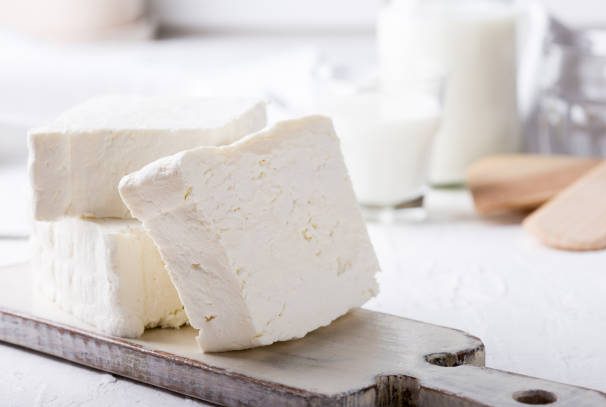Making your own cheese at home is a rewarding way to enjoy a mild white fresh cheese that’s perfect for spreading, crumbling, or using in your favourite recipes. If you’ve ever found cottage cheese a bit bland or wanted a firmer, more versatile option, this homemade farmer’s cheese recipe is for you. With just a few ingredients and simple steps, you can create a delicious cheese mixture that’s great on its own or as a substitute for ricotta cheese in other recipes.
What Makes Farmer’s Cheese Special?
Farmer’s cheese is a type of unripened cheese, similar to cottage cheese but pressed for a firmer, crumbly texture. You can make farmer’s cheese using cow’s milk, goat’s milk, or sheep milk, depending on your preference. Using good quality milk—such as whole milk, organic milk, or even raw milk if available—will give you the best results. Avoid ultra pasteurized milk, as it doesn’t set as well for cheese making.
This cheese is easy to customise. You can add fresh herbs, red pepper flakes, or black pepper for extra flavour, or mix in a bit of heavy cream for a creamier texture. It’s a great way to use up leftover milk and enjoy freshly made cheese that stays good in the fridge for up to a week.
Ingredients and Equipment
Ingredients:
- 3.7 L (about a gallon) whole milk (avoid ultra pasteurized or use organic milk for best results)
- 1/8 tsp mesophilic starter culture
- 1/4 tsp liquid animal rennet
- 1/4 tsp calcium chloride (diluted in 1/4 cup water, especially if using pasteurized milk)
- 1–2 tbsp heavy cream (optional, for a silky texture)
- Cheese salt or kosher salt, to taste
Equipment:
- Large pot (stainless steel is ideal)
- Wooden spoon or ladle for stirring occasionally
- Curd cutter or long knife
- Colander
- Cheese cloth, flour sack towel, or butter muslin
- Large bowl for draining and mixing
If you’re making cheese often, Cheese Kettle offers cheese making equipment like cheese vats, curd cutters, and cheese presses that make the process more efficient and consistent.
Step-by-Step Instructions
- Prepare Your Tools
Start by sterilising all your equipment. This helps keep your homemade cheese fresh and safe to eat. - Pour the Milk and Heat
Pour milk into your large pot. Using medium heat, slowly warm the milk to 22°C. If you’re using pasteurised milk, add the diluted calcium chloride and stir gently. - Add the Starter Culture
Sprinkle the mesophilic starter culture over the surface of the milk. Let it sit for a minute, then stir gently in an up-and-down motion for about a minute. - Add Rennet
Add the liquid animal rennet and stir gently for another minute. - Let the Milk Set
Cover the pot and let the milk sit undisturbed at room temperature for 18 to 24 hours. This allows the milk to form curds. - Cut the Curds
Use a curd cutter or long knife to cut the curds into 1/4-inch cubes. - Rest the Curds
Cover and let the curds sit for 10 minutes. - Heat the Curds
Slowly heat the curds to 37.8°C, stirring occasionally to keep them from sticking together. Maintain this temperature for 10 minutes. - Increase the Temperature
Gradually raise the temperature to 44°C over 15 minutes, then hold for 30 minutes until the curds are firmer. - Let Curds Settle
Remove from the heat, cover, and let the curds settle at the bottom of the pot for 5 minutes. - Drain the Curds
Line a colander with cheese cloth or a flour sack towel and set it over a large bowl. Slowly pour in the curds to drain off the whey. - Bundle and Rinse
Gather the edges of the cloth and tie with butcher’s twine. Dip the bundle into cold water a few times, then drain for several minutes. - Cool and Drain Further
Place the bundle in a tub of ice water to cool the cheese quickly. Hang the bundle and let it drain until the cheese has your preferred moisture level. For a drier, crumbly texture, drain longer. - Season and Finish
Transfer the cheese to a bowl. Add kosher salt and mix well. For a creamier texture, stir in the heavy cream. You can also add fresh herbs, red pepper flakes, or black pepper at this stage. - Store Your Cheese
Place your finished farmer cheese in an airtight container and refrigerate. Enjoy within up to one week for the best flavour.
Serving Suggestions and Tips
Homemade farmer’s cheese is a mild white fresh cheese that’s perfect for spreading on bread, crumbling over salads, or using in bread making. Try it with fresh fruit, a drizzle of olive oil, or as a filling for sweet cheese desserts. It’s also a great addition to pasta, pizza, or as a substitute for ricotta cheese in lasagna.
If you have leftover whey, use it in bread making or smoothies for extra nutrition.
Can You Freeze Farmer’s Cheese?
You can freeze farmer’s cheese by placing it in a freezer bag, though the texture may change slightly. Thaw in the fridge and use within a few days.
Conclusion
Making your own cheese at home is simple and satisfying. With just milk, a few basic ingredients, and some patience, you can enjoy freshly made cheese that’s perfect for your favourite recipes. Whether you use cow’s milk, goat’s milk, or sheep milk, this easy recipe gives you a versatile, mild cheese to enjoy all week.
Cheese Kettle Can Help You Get Started
Cheese Kettle offers a range of cheese making equipment and supplies to help you make farmer’s cheese and other homemade cheeses with ease. Explore our product selection of cheese vats, curd cutters, and more to make your cheese making experience even better.







